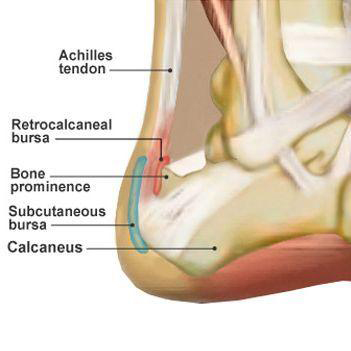
Achilles Tendon and/or Heel Pain
What Is The Problem?
Achilles tendinopathy is a condition that causes pain, swelling and stiffness of the Achilles tendon. The Achilles tendon joins the calf muscle to the heel bone. Tendons, unlike red muscle, are white and have a poor blood supply. This poor blood supply means tendons heal slower. It is thought repeated tiny injuries cause the problem. After each injury the tendon does not fully heal and overtime damage builds up with the tendon. This can either be at the point the tendon inserts into the bone (insertional Achilles tendinopathy) or in the middle of the tendon (non-insertional Achilles tendinopathy).
In this condition the Achilles tendon remains together and is different to an Achilles tendon rupture. An ultrasound scan or MRI scan may be requested to confirm the diagnosis and assess the severity.
Do I Need To Have Treatment?
For the majority of people the symptoms of Achilles tendinopathy usually settle within 3 to 6 months.
What Are The Treatment Choices?
Non – Surgical
The first line of treatment is to rest and have time off sporting activities. Painkillers may help to relieve the pain. Ice packs may also help relieve the pain and reduce the swelling. Make an ice pack by wrapping ice cubes or a bag of frozen peas in a towel and apply the ice pack for 10 to 30 minutes. Do not apply ice directly to the skin as it may damage the skin.
Achilles tendon stretching exercises are recommended. You should aim to do these everyday and often it takes 3 to 6 months to benefit from these. A physiotherapist may guide you with these.
Insoles supporting your foot or lifting your heel may also help to reduce pain.
Surgical
If the non-surgical treatments do not help then surgery maybe an option. The main aim of surgery is to reduce your pain. The surgical treatment depends on if you have insertional or non-insertional Achilles tendinopathy.
Insertional Achilles Tendinopathy
This involves taken the tendon off the heel bone and removing the damaged tendon and any bone spurs. The tendon is reattached to the heel bone with stitches.
Non-Insertional Achilles Tendinopathy
The tendon is thinner removing the damage areas and then repaired. If the damage is extensive then a tendon from your big toe can be used to replace the Achilles tendon.
This surgery is usually done under general anaesthetic. You may be able to go home that day or may require an overnight stay in the hospital. These decisions depend on your health and social situation. A decision will be made with you.
After the surgery your leg will be in a cast or a splint from below the knee to your toes for 2 to 8 weeks depending on the severity of tendon damage. It is important to keep your foot elevated. This reduces the swelling and helps the wound heal. You will be seen at approximately two weeks to have the wound reviewed. When you come out of your cast or splint physiotherapy will be arranged.
If takes six months for the tendon to heal and usually a year to recover from the surgery. Light exercise (jogging) can start at 3 months. Contact sports (squash, football) can start at 6 months.
Are There Complications?
With any surgical procedure there is a chance of a complication. Every effort is made to minimise the possibility. The complications include:
Long term pain: For this reason surgery is not done for cosmetic reasons.
Infection/Wound Breakdown: Infections may settle with antibiotics but if serious surgery maybe required. Smoking increases your risk.
Swelling: Most swelling resolves but some may have permanent swelling.
Scar pain: A scar can be painful and sensitive. When the wound has healed and is dry, gentle massage with skin moisturise is recommended.
Numbness or Tingling: Usually this resolves but it may be permanent.
Tendon rupture: The tendon may rupture or pull off the bone. This can be repaired but usually requires further surgery
Blood clots: The risk of a blood clot in your calf (deep vein thrombosis) or lungs (pulmonary embolus) is rare after this surgery. Please inform the team if you have had one of these previously as this increases your risk.
